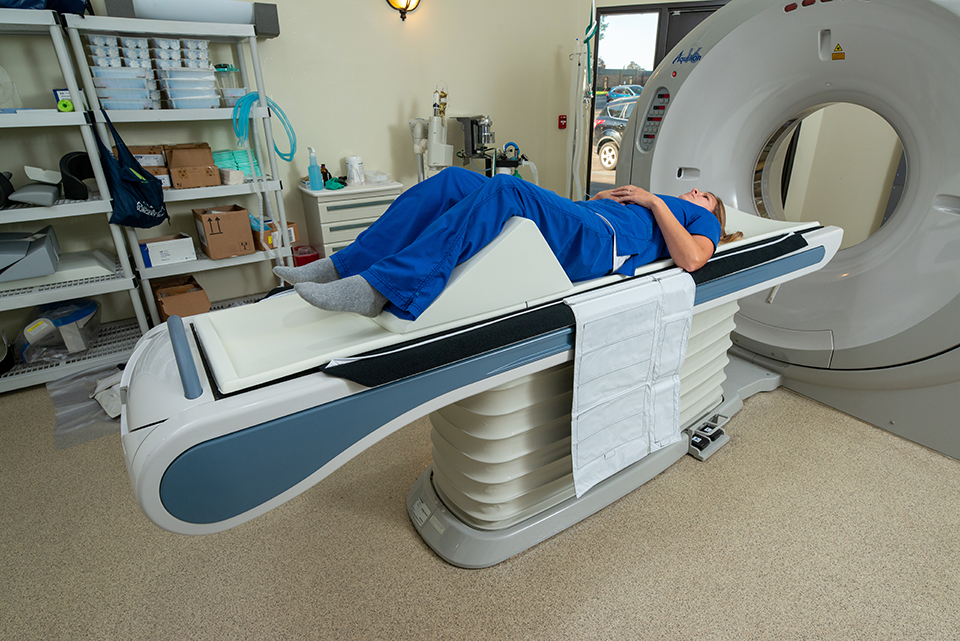Optimizing Hybrid Operating Rooms for the Patient, Part 4: Operational Efficiency & Profitability
In our ongoing series on optimizing hybrid operating rooms (ORs) for patient benefit, we've explored the fundamental aspects of these advanced...
4 min read
Domico Med-Device May 23, 2023
This is Part 2 of a 4-part series on optimizing hybrid ORs for patients. Part 1 offered an overview of hybrid OR benefits. In Part 2, we’ll discuss ways to enhance the patient experience.
While image-guided therapy (IGT) and hybrid operating rooms bring significant benefits to patient outcomes, they also require careful consideration of how they impact the overall patient experience. Ensuring patients feel comfortable, safe, and at ease before, during, and after their procedures is essential for successful outcomes and patient satisfaction. By focusing on comfort, safety, and emotional well-being, hospitals can enhance the overall patient experience and improve procedural success.
 Comfort
ComfortOne of the primary goals in optimizing the patient experience is to ensure maximum comfort during procedures. Image-guided therapy (IGT) allows for unprecedented precision by providing real-time imaging of internal structures. However, maintaining patient comfort while ensuring high-quality imaging presents several challenges.
During procedures, patients must remain as still as possible to obtain clear images. Prolonged immobility can lead to a range of issues, including:
Pressure injuries: Prolonged pressure on specific areas of the body can cause pressure sores, especially in patients who are sedated and cannot communicate discomfort.
Hyperextension: Extended periods of positioning may lead to hyperextension of joints, which can cause discomfort or injury.
Soft tissue and muscle injuries: Remaining in one position for too long can lead to strain or injury to soft tissues and muscles.
Respiratory, circulatory, and nerve complications: Poor positioning can impact respiratory and circulatory functions and may lead to nerve compression.
Additionally, with over 60% of surgical patients being overweight or obese, traditional OR equipment often fails to accommodate their needs. Most IGT tabletops are narrow and may not offer sufficient support for larger patients, potentially compromising their comfort and safety.
To address these concerns, several strategies can be implemented:
Bariatric extenders: These devices provide additional support and surface area for larger patients, making it easier to position them safely and comfortably. Bariatric extenders help prevent issues related to pressure and provide more secure positioning during procedures.
Carbon fiber extenders: These radiolucent extenders allow for clear imaging without requiring the patient to be repositioned. This is especially important for maintaining patient comfort and minimizing the need for movement during imaging procedures.
Full-length memory foam table pads: Memory foam pads conform to the patient’s body shape, distributing pressure evenly and reducing the risk of pressure injuries. These pads also provide additional cushioning, enhancing overall patient comfort.
Ensuring patient safety and security is paramount in any surgical environment. In hybrid operating rooms, safety extends beyond basic positioning and includes the flexibility and adaptability of the room setup.
Hybrid operating rooms are designed to accommodate a variety of procedures and allow for conversions between different types of interventions. For instance, a room may initially be set up for a minimally invasive procedure but can be quickly converted to an open procedure if needed. This adaptability ensures that the surgical team can respond to evolving patient needs without causing delays or compromising safety.
Several features contribute to the safety and security of patients in hybrid ORs:
 Bariatric extenders and strap sets: These tools help secure patients in place, preventing accidental slips or falls during procedures. They are particularly useful for accommodating larger patients and ensuring stable positioning throughout the surgery.
Bariatric extenders and strap sets: These tools help secure patients in place, preventing accidental slips or falls during procedures. They are particularly useful for accommodating larger patients and ensuring stable positioning throughout the surgery.
Flexible rail systems: Rail extenders allow for the attachment of various traditional OR tools and accessories, enabling the room to be quickly adapted to different procedural requirements. This flexibility ensures that the surgical team can effectively manage patient needs and maintain a high level of safety.
Convertible room setups: The ability to convert the OR between procedures or within a procedure itself provides additional safety by allowing the team to respond to changing circumstances efficiently. This capability helps prevent unnecessary delays and ensures that patients receive timely and appropriate care.
Patient anxiety is a common challenge in medical settings, particularly when undergoing new or unconventional procedures such as image-guided therapy. Addressing patient concerns and fostering a sense of security can significantly enhance the overall experience and contribute to better outcomes.
To alleviate anxiety and promote a positive patient experience, hospitals can take the following steps:
Effective communication: Clear communication is crucial for managing patient expectations and reducing anxiety. Hospital staff should explain the procedures, the measures in place to ensure comfort and safety, and how the use of advanced equipment contributes to better outcomes. Providing detailed information helps patients feel more informed and prepared.
Patient education: Educating patients about the benefits of IGT and hybrid ORs can help ease concerns. For example, explaining how real-time imaging enhances precision and improves surgical outcomes can provide reassurance. Highlighting features such as bariatric extenders and memory foam pads also demonstrate the hospital’s commitment to patient comfort and safety.
Preoperative counseling: Offering preoperative counseling sessions can help patients understand what to expect and address any specific concerns they may have. These sessions provide an opportunity for patients to ask questions and receive personalized information, which can reduce anxiety and improve overall confidence in the care they will receive.
By taking these steps, hospitals can create a more supportive and reassuring environment for patients, ultimately enhancing their overall experience and contributing to better procedural outcomes.
 Conclusion
ConclusionIn conclusion, optimizing the patient experience in hybrid operating rooms is crucial for ensuring comfort, safety, and emotional well-being throughout procedures. By implementing strategies such as bariatric extenders, memory foam table pads, and effective communication, hospitals can enhance patient satisfaction and improve procedural outcomes. Addressing patient anxiety and promoting a supportive environment not only benefits patients but also contributes to better staff workflow and productivity. Stay tuned for Part 3 of this series to discover how optimizing the patient experience benefits the entire surgical team and learn more about enhancing hybrid ORs for optimal patient care.
Optimizing the patient experience in hybrid operating rooms involves a multifaceted approach that addresses comfort, safety, and emotional well-being. By focusing on these areas, hospitals can enhance patient satisfaction and improve procedural success. In the next installment of this series, Part 3, we will explore how a better patient experience translates into improved staff workflow, productivity, and confidence. Stay tuned to discover how optimizing the patient experience also benefits the entire surgical team.

In our ongoing series on optimizing hybrid operating rooms (ORs) for patient benefit, we've explored the fundamental aspects of these advanced...

This is Part 3 of a 4-part series on optimizing hybrid ORs for patients. Part 1 offered an overview of hybrid OR benefits. Part 2 discussed ways to...

This is Part 2 of a 3-part series on patient positioning factors that improve imaging and therapy success. Part 1discussed how patient positioning...